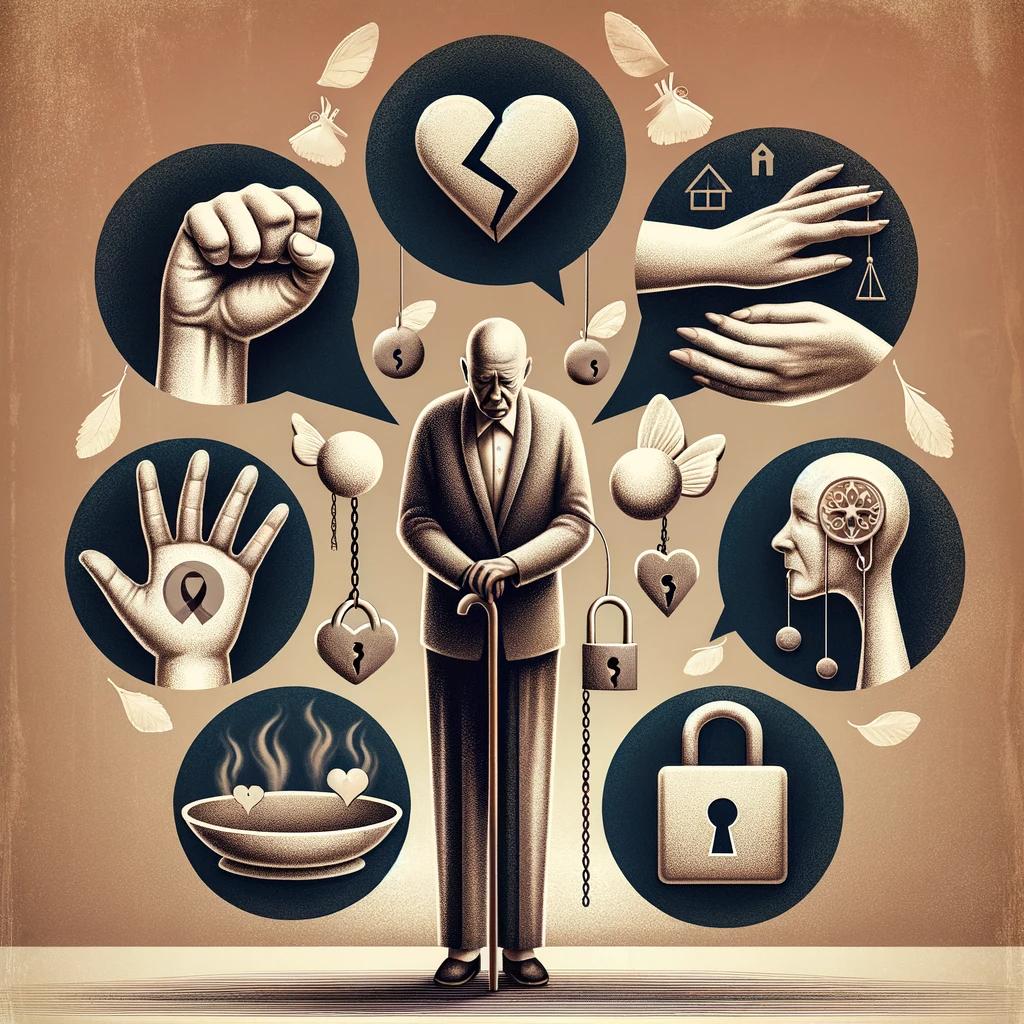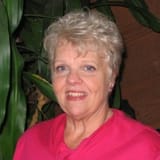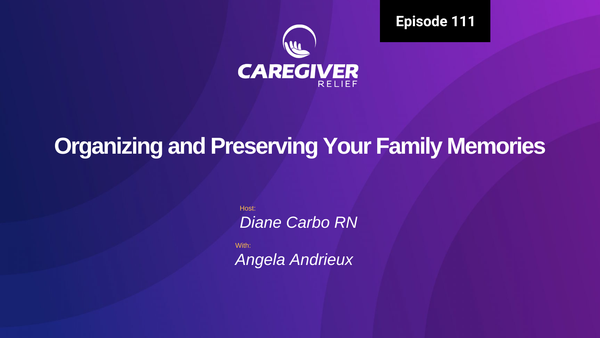Addressing Elder Abuse in Memory Care Facilities: A Critical Issue for Vulnerable Seniors
Addressing Elder Abuse in Memory Care Facilities" highlights the urgent need to protect vulnerable seniors from abuse. It emphasizes the importance of enhancing safety measures, improving staff training, and increasing regulatory oversight in memory care settings

I tell my clients that Assisted Living is the most dangerous of our medical delivery system. I know many people find that offensive. I want to explain why I feel this way. I want to share some personal stories of my experience in Assisted Living and memory care units.
I was a Director of Nursing for a very large and upscale assisted living with a memory care unit. I was also licensed to act as an Administrator for the facility when needed. When I say upscale, I mean the type of facility that has the baby grand piano in the lobby, the dining staff wears the tall white hats and white coats. The food was amazing and the residents enjoyed it. The residents were able to order from a menu.
It was a beautiful place. It was also the most dangerous place I have ever worked. There were 5 DON's before me. I lasted the longest. I was there almost 90 days. What I learned and saw, turned my stomach. This facility had independent living clients with those that needed a higher level of care. When I started at this facility, I felt overwhelmed.
It was my first day on the job. I am taking a tour of the facility when I had one of the residents ask me to please take out another resident. That is when I met John. John was in the middle stages of dementia. He was not placed in the memory unit. John had been a letter carrier as his career. He was an art collector. This modest looking man had amassed a very large fortune. It was breakfast time in the facility. When I approached John, the stench was very strong. I went to John and told him, I wanted to take him back to his room and give him a shave and a shower. We took breakfast with us.
As I approached his room, one of the aides took me aside and told me not to go into that room. I could not understand why. It was obvious John needed attention. When I opened the door the smell was so strong. My reaction was one of anger, rage and disgust. This poor man lost his wife a few years ago. All he had was an attorney that paid his bills. What I found would make your skin crawl.
John was unable to provide care for himself. He was in the middle stages of dementia. His room had a bed, a table and an electric chair that helped him get to a standing position. I found dried stool everywhere. On his chair, his bed and on the floor. I found a bathroom cupboard full of used dirty toilet paper. I bathed John and shaved him in an empty room down the hall. I made the neglectful staff clean that room with the house cleaning crew. Then, the staff and I had a come to Jesus meeting.
The staff told me, John refused care and they could not force him. This is a common problem in assisted living. If a patient refuses care, they will not make them, even if it may cause other health issues.
This was a problem that a client faced with her in-laws. Her mother in law had an adjoining room to her husband with dementia. From the day she moved in, she wanted to be waited on. She refused to get out of bed, refused to bathe and refused to change her underwear. When her daughter in law asked to please get her mother in law to get bathed and changed, she was told that they cannot force a resident to do anything. This substandard level of care was costing almost $10,000 a month. They had 2 adjoining rooms and the husband had a diagnosis of dementia.
When I tell this story, I am asked, how could this happen? It happens because assisted living is based on a social model versus a medical model.
Here's another example: many memory care facility staff have no knowledge of dementia or commonly occurring conditions that negatively impact seniors. I had a phone call from one of my clients a few months back. He was upset. He had a phone call from the memory care unit his mother was in. Her behaviors were out of control. This usually sweet natured woman we acting out, combative and argumentative. They informed him he they were giving him notice. He was going to have to find another place for her.
Frank was in shock and unprepared for this news. He called me for advice on what to do next. The first thing I asked was, did they check her for a urinary tract infection. He said 'No". I suggested that he take her to the emergency room, have her tested. If it was not a UTI, I suggested he request a transfer for her to a senior behavioral health unit. The behavioral health unit would do tests and observe his mother for a few days. They may introduce medication if it was deemed necessary. This would give him a chance to check out other memory care facilities. I did warn him, that any person that has difficult and challenging behaviors is very hard to place. No one wants them.
I got a call from Frank a few hours later, and it was determined his mom had a UTI. It was so bad, she had to be placed in the hospital for IV's for a few days. I can tell you, any health care professional, and many seasoned caregivers, know the first thing you check for is a urinary tract infection when there is any change in mental status or personality. Seniors don't always show the typical signs and symptoms of a UTI. That a caregiver tip for you new to caregiving. Or for those providing care in another setting.
The distinction between a social model and a medical model, especially in the context of assisted living, is an important one in understanding how care and support are provided for individuals, particularly the elderly or those with specific health needs.

What is a Medical Model:
Focus: The medical model is primarily focused on the diagnosis, treatment, and management of diseases and health conditions. It views patients through the lens of their medical needs and seeks to treat or manage these conditions through clinical interventions.
Approach: This model is typically problem-oriented. It aims to identify and treat specific health issues, often using medication, surgery, or other medical interventions. The medical model is usually employed in settings like hospitals, specialized care facilities, and some nursing homes. The nursing homes must have trained professional staff to oversee the care of the residents. There are federal and state regulations that the facility must follow. There is a lot of accountability, paperwork, and documentation. Even with all that over sight, elder abuse and neglect still occurs.
Professional Dominance: In the medical model, healthcare professionals (doctors, nurses, specialists) play a central role. They make decisions based on their clinical expertise and knowledge of diseases and treatments.
Environment: The environment in a medical model is often clinical and structured around healthcare delivery. It includes equipment, medical procedures, and regimented schedules focused on the treatment and management of health conditions.
Objective: The primary objective is to improve physical health, manage symptoms, and treat illnesses. It may not always take into account the patient's emotional, social, or psychological needs. There are regulations that require activities and socialization be available during the day. You can go into most nursing homes, and you will see an activity room.

What is a Social Model?
Focus: The social model, particularly as seen in assisted living facilities, emphasizes the individual’s overall well-being, including social, emotional, and mental health, alongside physical health. This philosophy is incongruent with memory care facilities. You see, families expect those providing care will observe changes in their loved one and address the issues. Families do not realize, Assisted living is like having your loved one in an independent living center. If you need blood pressures done, medications given, blood sugars checked, you have to pay a la carte for every single service. And be aware, the same person serving you are the local fast food restaurant, could be the same person giving your loved one their medications. In 55% of assisted living facilities, there is a medication aide who has completed a four-hour training. I have supervised medication administration and was disturbed by what I observed. I have seen aides leave meds at the table side (hey, professional nurses are guilty of this too). I have seen aides crush medications that were not to be crushed. The lack of training is responsible for 4% to 8% of medication errors. I think it is higher than that, but it is not reported.
I was on a forum that was for aides working in nursing homes and assisted living. One aide, blatantly bragged, she puts the medications she was to give in the needle box. The stories I heard made me sick. I actually had that site shut down.
Approach: This model is more holistic and person-centered. It recognizes that quality of life is not determined solely by medical care but also by social interactions, emotional support, and personal autonomy. Im sorry, this is not in line with the needs of the patients. If care is needed, home care is brought in. A person centered care approach does not exist in assisted living. And it is non existent in a memory care unit. One example is, dementia patients may wander and pace at night. If there was truly a person centered care approach to care, memory care facilities would have quiet activities for a person suffering from dementia in the middle stages to do.
I recently had a call from an 86 yr old female. She called me to ask for help with her husband. Her husband has been in a memory care unit for 4 years. He is 90 years old. This sweet woman was telling me her husband is starting to fall and she wanted to get a bed and chair alarm. She has seen many others fall in the facility and it resulted in a hospitalization and an admission to a nursing home. A few resulted in death.
This little lady was told that the facility does not allow alarms in the building. I told my client, that is a facility rule, as there are very limited rules and regulations in assisted living. She could argue this. I instructed her to write and call the state ombudsman. CC the CEO of the organization, the administrator and if there is a DON, include him/her as well. What I learned from this poor woman made my hair curl. I will address some of the issues she shared. I also have a few more personal stories to share.
Empowerment: In a social model, there is a greater emphasis on empowering individuals to make decisions about their own lives. The role of care providers is more supportive and facilitative rather than directive.To me that's an issue. because, individuals with dementia are unable to direct their care, communicate their needs and as they decline, unable to dress and eat without total support.
Environment: The environment in a social model, such as in assisted living facilities, is designed to be more homelike and less clinical. It aims to provide a supportive community with opportunities for social engagement, recreational activities, and personal growth. Herein lies a huge problem. As a person declines, they need more and more assistance. The families must stay on top of things. The staff is not trained into observing and reporting a change in status.
Objective: The main goal is to enhance the quality of life and ensure that individuals lead fulfilling, dignified lives. While medical care is provided by home care agencies, I encourage my clients to ask for a palliative care referral. This allows the family to have an extra set of eyes on their family member.
Assisted Living as a Social Model:
Assisted living facilities exemplify the social model. They provide a community environment where older adults or those with certain disabilities can live with a degree of independence while still receiving support for daily activities. These facilities focus not just on health and safety but also on enabling residents to engage in social activities, pursue hobbies, and maintain a sense of community and personal identity. Medical care is available but integrated in a way that supports the overall quality of life, rather than being the sole focus of the resident's experience.

Assisted Living Facilities: Navigating State Regulations and Improving Resident Safety
Now I want to get into the nitty gritty of what I feel needs to be changed in assisted living, especially memory care facilities. The oversight of the approximately 30,000 assisted living facilities in the United States is not governed by federal regulations but rather by state laws. This leads to a varied landscape of regulations that often do not align with expert safety and transparency recommendations. I read a detailed analysis in a recent article in The Washington Post. This article highlights significant disparities in how these facilities are regulated across different states.
Key Recommendations for Enhanced Safety and Transparency
Experts and advocates have identified crucial requirements that could significantly improve safety and transparency in assisted living facilities:
Mandatory Staff-to-Resident Ratios: Implementing fixed ratios for on-duty staff per resident is vital. However, such mandates are rare. Only 13 states have specific staff-to-resident ratio requirements, with most states employing vague terms like “sufficient” staffing.
I have a real issue with this regulating staff to resident ratios based on numbers of residents. There are ways staffing can be addressed by staffing according to acuity levels. I wish this would occur in nursing homes, as well as assisted living memory care units.
I spoke of the sweet 86 yr old with the 90 yr old husband with dementia. She has complained multiple times about the level of care her husband is receiving. Every time she goes to the administrator, his response is,"We are staffed at the state levels required." The problem is, there is no way that 2 people can provide care to 25 residents with middle stage and late stage of dementia the level of care they are paying for.
This lady is spending over $6000 a month for care. She see her husband every day and stays for 5 to 6 hours. She makes it her goal to get there for lunch. This poor woman find her husband still in bed, with a strong smell of urine. He has not been given anything to eat or drink since dinner the prior night. He has not had any care, because he wants to sleep. The aides, already facing unrealistic expectations of care, leave him. This is abuse and neglect that goes unreported.
Nursing homes also have poor staffing. When a government determines minimum staffing level, they ignore the acuity needs of a resident. These laws, meant to create better working conditions and safer environments for the residents has the opposite effect. It gives the greedy corporations an excuse to provide substandard care, while laughing all the way to the bank.
Here is what every person needs according to nursing standards of care. A resident should be assessed at the beginning of every shift. Each resident needs personal care, taken to the bathroom, diapers changed, fed if needed. Some residents just need meals set up and food cut, before they can eat. Oral care, hair care, skin care is needed every shift. A person, like my little 90 year old man, should be turned , changed, personal care and skin care provided.
According to his wife, there are several wanderers with a high fall risk in the memory care unit. When you know the level of care that is needed, you realize 2 aides on a shift is not even close to what is needed for a the resident to enjoy a dignified quality of life. In fact, this level of care, idealistically, would have 1 aide to 3 residents. I can tell you, nursing home aides have 6 to 12 patients a shift. No one is getting quality care.The issue I have is, those with the ability to pay for care, should be provided care congruent with what they are paying.

Dementia Training for Caregivers: Requiring a minimum of six hours of dementia-specific training for all caretakers is essential. Currently, training requirements vary widely across states, with less than half mandating such training for all staff, and even fewer meeting the Alzheimer’s Association's recommended minimum. I can tell you, the only thing that makes a memory care different, is they have a locked unit. The lack of training is a problem. I have helped people tour facilities to find the right one for their loved one. I have been in many states, and toured many facilities. What I have found is, the majority of these facilities provide inadequate care in their memory care units. The cost is incongruent with the level of care provided.
I spoke earlier about being a DON in an upscale assisted living facility with a memory unit. Again, it was the most dangerous place I ever worked. One morning, I came in very early in the morning. It was 4 am. I found the memory unit aides sleeping on the job. Since I has started the job, I had asked the organization to please send staff to help me assess what types of patients I have in the building. Those requests went unheard. This was a national chain with lots of money.
So, I spent long days, starting at one floor. I went into each room, and introduce myself to each resident. This was a 350 bed facility. It was huge. On this particular day, I found a very sweet older man walking the halls. He told me he was getting some exercise. It was a lovely day and I suggested that he should go outside. It was summer and still light out. He informed me he could not go far, as his wife needed him.
That day, I found that his wife was on hospice and he was supposed to provide care for her. The man was a small frail man. His wife was not able to get out of bed, was incontinent and unable to feed herself. He said in the evenings, he had no help, and was expected to provide care by himself. This man and his wife had fallen through the cracks. That same day, I was urgently called to a room, where a man had fallen in the bathroom. He had become dizzy and passed out. He was a diabetic, so, I checked his blood sugars. His sugar was sky high. A medication aide had discontinued his insulin. He was placed in a nursing home after that preventable fall. I walked out of the facility that day, because, there were so many things that needed to be addressed, and the requests for help from the corporate office went ignored. I was not going to put my license on the line. It was a dangerous place to work.
Online Access to Facility Reports: Providing families with online access to inspection reports and complaints would aid in making informed decisions when choosing a facility. Currently, the availability and ease of accessing this information differ greatly between states.
The Problem of Elopements and Variable State Responses
A critical issue in assisted living facilities is the phenomenon of “elopements” or walkaways, where elderly residents leave the premises unattended. Over the past five years, more than 2,000 such incidents have occurred in the U.S., with nearly 100 resulting in death. The response to this issue varies significantly across states, with some lacking measures to acknowledge or address the problem effectively. I was working as a consultant in an assisted living that was taking MediCal. That is the California medicaid insurance. This facility, because it was paid for by Medicaid, was functioning on a shoestring budget. The food was awful. I thought in California it would have fresh fruit and vegetables. Not so.
I spent the night at the facility to work with the staff. I found the aide in charge sleeping at the front desk. That night, an elderly Asian man, with dementia, found a way out the staff entrance. The staff noticed him missing at the change of shift. No one knows how long he was gone.
The administrator contacted the police. The night shift started a search of the area. Four hours later, the man was found, about 2 miles away. He had his walker. His feet were blistered and he was dehydrated. I learned this was the second time he had eloped.
Impact of Regulatory Changes on Resident Safety
Switching from vague staffing requirements to specific ratios can have a tangible impact. For instance, in Mississippi, the implementation of a concrete staffing ratio led to a noticeable decrease in the risk of injuries and illnesses requiring hospitalization among residents. This effect is even more pronounced in residents with dementia. Again, I hate the minimum staffing requirement approach to care. It does not take into account the needs of the residents. We need to staff according to acuity levels, to meet the needs of the residents. And in Assisted LIving, the prices they charge do not reflect the care provided.
Training Requirements and Their Importance
The level of training provided to staff, especially in dementia care, plays a crucial role in resident safety. However, the extent and rigor of training requirements are inconsistent across states. This inconsistency poses a risk as not all residents with dementia reside in specialized memory care units, underscoring the need for comprehensive staff training.

State-by-State Variability in Transparency and Enforcement
Inspection frequency and transparency also vary widely. While some states provide easy online access to facility reports, others require public records requests, and a few do not release certain information at all. Additionally, enforcement levels and potential fines for non-compliance differ across states, leading to an uneven landscape of accountability and resident protection.
I have another story to share with you. This is just another disturbing aspect of the lack of transparency in assisted living. I recently was called by a client. Her daughter in law was called by her fathers assisted living. She lives on the west coast. His assisted living was on the east coast.
When Shelly got to the facility to clean out his room, she discovered his room was clean and neat. She also noticed a lot of his things were missing. A very expensive watch, his scooter, his walker and a few other things. His checkbook was also missing and his locked drawer was open. The envelope he kept his cash in , was empty. Of course, Shelly is in the throes of grief. As she's cleaning, the aides are standing around, like vultures. They wanted whatever she was getting rid of. To her surprise, the aides went through the stuff and left what they did not want on the floor outside his room.
My client wanted to know what they should do. I told them to call the police and let them investigate. What they found was disturbing. The facility was allowing some woman to come into the facility and take the belongings of residents that passed. She was taking their scooters and belongings to sell. This is still under investigation. Here is what I told them to report abuse.
Navigating Issues in Assisted Living: Reporting Procedures and Guidelines
When encountering problems in assisted living facilities, it's crucial to not only report these issues to the facility management but also to be aware of the necessity to inform state licensing agencies that oversee assisted living.

Contacting the Right Authorities for Abuse and Neglect
In cases where there is evidence of neglect or abuse, it's imperative to immediately contact Adult Protective Services (APS) or the state's licensing agency responsible for assisted living. Additionally, reaching out to the Long-Term Care Ombudsman in your area is essential. In some states, APS staff handle the investigation of complaints. The Long-Term Care Ombudsman is federally authorized to investigate and resolve complaints on behalf of older residents in long-term care facilities.
Identifying Types of Complaints to Report
There are various types of complaints that require immediate reporting:
Physical Abuse: This includes any behavior causing pain or injury that is not accidental.
Verbal Abuse: Any conduct that causes mental or emotional stress.
Sexual Abuse: Violations of criminal sexual conduct or prostitution statutes.
Exploitation: Illegal use of a person or their property through undue influence, duress, deception, or fraud.
Financial Mismanagement: Situations leading to potential exploitation.
Neglect: The failure to provide necessary food, clothing, shelter, healthcare, or supervision.
Documenting the Details of the Complaint
For effective handling of the complaint, it's important to meticulously record its details:
Incident Description: Document what happened in detail.
Victim Identification: Note to whom the incident happened.
Time and Date: Record when the incident occurred.
Location: Specify where the incident took place.
Abuser Information: Identify who committed the abuse.
Responsibility for Neglect: Note who was responsible for any neglect.
Being thorough and precise in reporting and documenting complaints is vital for ensuring that they are addressed appropriately and that residents in assisted living facilities receive the care and respect they deserve.
Conclusion: A Call for Uniform Safety Standards
The current state-by-state approach to regulating assisted living facilities results in significant disparities in resident safety and transparency. There is a clear need for uniform standards and stronger regulatory frameworks to ensure that all assisted living residents, especially those with dementia, receive the care and protection they deserve. I know that government regulations are a necessary evil. My reason for saying that is, these government policymakers are so far removed from the the real world. These bureaucrats don't know what they don't know. While implementing what they call expert-recommended measures such as mandatory staff-to-resident ratios, comprehensive staff training, and improved access to facility reports is believed to significantly enhance the quality of care in these facilities. I have my doubts. I know the long-term care industry very well. The nursing home industry is one of the most regulated industries in the country. The staffing is awful and the quality of care is diminished with the minimum staffing requirements. There needs to be a change in the regulations to staff according to acuity levels in both nursing homes and assisted living and especially in memory care units.
You might also like this article:
Our Resources section can help you find the information and tools that you need. We have courses, videos, checklists, guidebooks, cheat sheets, how-to guides and more.
You can get started by clicking on the link below. We know that taking care of a loved one is hard work, but with our help you can get the support that you need.
Click here to go to Resources Section now!





